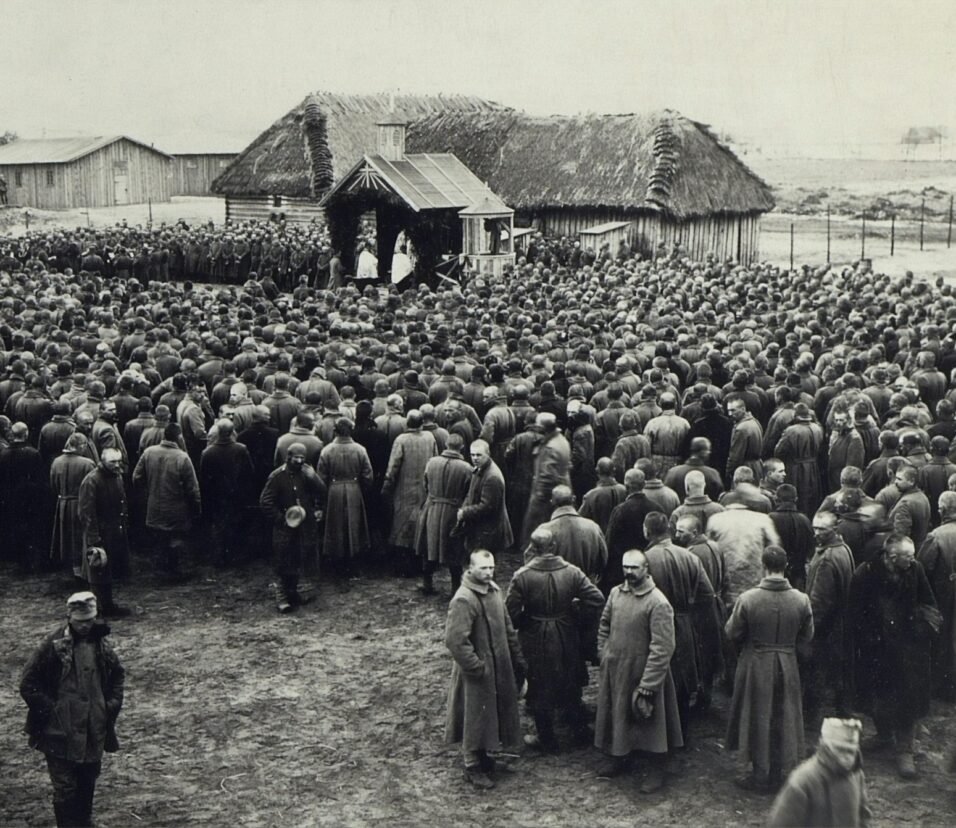Setting the Stage: The Paris Peace Conference
In the wake of World War I’s destruction, January 1919 bore witness to a critical congregation, the Paris Peace Conference. This gathering brought together four prominent figures, aptly known as the “Big Four.” The prime ministers of Britain and Italy, David Lloyd George and Vittorio Orlando, respectively, joined French President Georges Clemenceau and American President Woodrow Wilson in Versailles. These men were burdened with the monumental task of formulating a treaty that would not only conclude the Great War but also shape the future of international relations.
President Wilson’s Progressive Approach: The 14 Points and the League of Nations
President Woodrow Wilson of the United States arrived at the Paris Peace Conference equipped with an optimistic vision of creating a peaceful world order, driven by his “14 Points” statement that he had previously presented to Congress. He firmly believed that the horrors of World War I could only be justified if its conclusion marked the inception of a lasting global peace.
Wilson’s idea of ensuring such peace was the creation of a global peacekeeping organization, the League of Nations. This organization was tasked with the responsibility of resolving international disputes, thereby averting major conflicts in the future. Additionally, Wilson advocated for fair treatment of Germany post-war, a view that was to be met with resistance from his fellow leaders, each of whom carried their unique perspectives on the post-war scenario.
Clemenceau’s Call for Justice: France’s Pursuit of Reparation and Redemption
French President Georges Clemenceau presented a starkly different stance in contrast to Wilson’s pacifist approach. Rooted in the painful memory of past territorial losses, Clemenceau sought to exact punitive measures against Germany. His primary objective was to ensure that Germany accepted the blame for the war and made reparations for the massive damage inflicted.
Clemenceau’s stringent stance echoed the sentiments of the French populace, many of whom were still smarting from the loss of the province of Alsace-Lorraine to Germany in the Franco-Prussian War of 1871. He sought to leverage the peace treaty to restore French territory and pride, encapsulating the national sentiment of reparation and redemption.
Orlando’s Quest for Expansion: Italy’s Demand for Promised Territories
Vittorio Orlando, representing Italy, came to the conference with expectations rooted in a secret agreement signed in 1915. The Treaty of London, signed between Italy, France, Britain, and Russia, promised Italy territories in exchange for its participation in the war.
Orlando, therefore, arrived at Versailles with a clear agenda: to secure the territories promised to Italy. He particularly insisted on the annexation of the regions of Trieste and southern Tyrol. Orlando’s demands highlighted Italy’s aspiration for territorial expansion and recognition as a major power in the post-war world order.
Lloyd George’s Balanced Perspective: Safeguarding British Interests
British Prime Minister David Lloyd George entered the conference with a clear objective: to ensure the protection of Britain’s maritime supremacy and to establish a foundation for future economic ties with Germany. Though he agreed with Clemenceau’s insistence on Germany’s responsibility for the war, he advocated for a less punitive approach towards the defeated nation.
Understanding the interconnected nature of global economies, Lloyd George was keen on preserving possibilities of future trade with Germany. This foresight, coupled with his desire to uphold Britain’s naval strength, formed the crux of his contributions to the peace treaty negotiations.
The Aftermath: The Signing of the Treaty of Versailles
After six grueling months of deliberations and negotiations, the varying visions and demands of the Big Four were encapsulated in the Treaty of Versailles. This landmark treaty, signed by the Allies and Germany, marked the formal cessation of World War I, concluding the tumultuous period of peace negotiations.
In Retrospect: Reflecting on the Treaty of Versailles and its Global Implications
Looking back at the Paris Peace Conference and the Treaty of Versailles, we understand their significance in shaping the course of history and international relations. The unique and divergent visions of the Big Four played a pivotal role in crafting the treaty and shaping the post-war world order.
The Paris Peace Conference and the subsequent signing of the Treaty of Versailles set a precedent for global diplomacy, revealing the intricate balance between national interests and collective global peace. In this historical narrative, the personalities and politics of the Big Four have left an indelible mark, shaping our understanding of diplomatic negotiations and the intricate dynamics of international relations.
By examining these momentous events, we garner invaluable insights into the complexities of diplomatic interactions, the relentless pursuit of national interests, and the enduring aspiration for global peace. Even as we navigate the challenges of the 21st century, these lessons from the past continue to illuminate our path, serving as a poignant reminder of our shared human history and the ceaseless quest for peace and progress.







